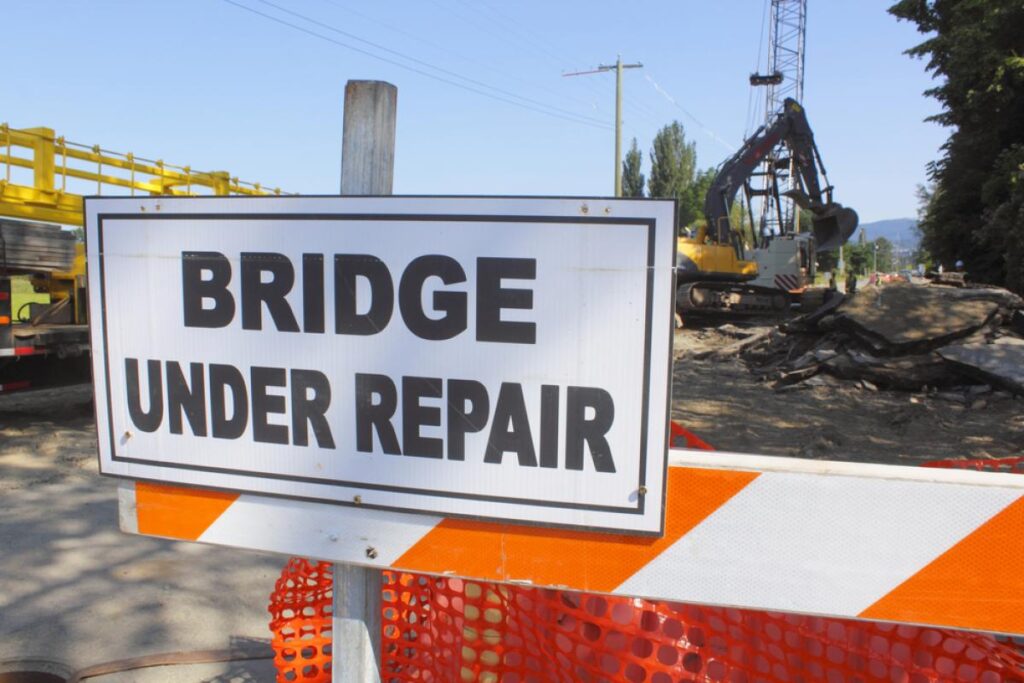Shutterstock photo
The Rhode Island Department of Transportation (RIDOT) revealed Dec. 11 that its inspectors found a critical structural failure in one of the busiest bridges in the state, which lead to an immediate closing of the westbound side of the structure to begin a repair job expected to take months.
The Washington Bridge carries Interstate 195 over the Seekonk River from Providence to East Providence and serves as a key gateway to the state’s largest city. Approximately 96,000 vehicles travel across the bridge daily.
Only four days after the problem was discovered, though, RIDOT opened two bypass lanes for I-195 West traffic between the two cities as work continued to fix the problem. The temporary traffic pattern will allow two lanes of travel westbound and two lanes of travel eastbound — all operating on the eastbound Washington Bridge.
RIDOT Director Peter Alviti said at a news conference Dec. 13 that a review of state inspection reports of the Washington Bridge led his agency to believe that “something catastrophic” happened since July that broke a support rod on the structure.
“Our engineers are telling us that very evidently there was some kind of load imposed that created a kind of catastrophic failure in these supports,” explained Alviti as he showed before-and-after photos of the damage.
By then, travel conditions had begun to improve after the sudden westbound closure late on the afternoon of Dec. 11, which stranded commuters for hours and sent others veering off their normal path. Some nearby schools closed and held classes remotely, the Associated Press (AP) reported.
“What’s normally a morning commute time of a 40-to-45-minute drive was 4½ hours,” John Marion, executive director of Common Cause Rhode Island, said of his Dec. 12 commute. Rather than make the drive again, he chose to work from home the next day.
In order to provide an alternate mode of transportation for commuters, RIDOT planned to begin a ferry service Dec. 21 from the Bristol area into Providence.
A project update posted Dec. 20 on the state agency’s website noted, “We made repairs to the concrete on the westbound side to prepare the surface for installation of the steel components that we will need to install. The steel components, both plates and anchor rods, are being fabricated this week and will be delivered [just after Christmas]. Because much of this work takes place under the bridge deck, travelers may not see large numbers of workers on the bridge, but they are at work.”
‘A Permanent State of Disrepair’
Alviti warned of the bridge’s poor condition in a 2019 grant application to rehabilitate the bridge and make improvements to traffic flow, writing that it was “nearing a permanent state of disrepair.”
Constructed in 1969, the westbound portion of the Washington Bridge was rated as “poor” according to the Federal Highway Administration’s (FHWA) National Bridge Inventory released in June.
The overall rating of a bridge is based on whether the condition of any one of its individual components — the deck, superstructure, substructure, or culvert, if present — is rated poor or below, the AP noted.
In the case of the westbound portion of the Washington Bridge, inspectors rated the deck and substructure as “satisfactory.”
However, an AP analysis of historic FHWA’s National Bridge Inventory data shows the superstructure, or the component that absorbs the live traffic load, has almost consistently been rated “poor” since 1990.
The Washington Bridge currently has an inspection frequency of 24 months, according to federal data. State officials said it was last inspected in July.
Maine’s U.S. Sens. Jack Reed and Sheldon Whitehouse, along with U.S. Reps. Seth Magaziner and Gabe Amo, said they wrote to U.S. Transportation Secretary Pete Buttigieg urging the government to free up existing funding that could accelerate completion of the emergency work on the bridge.
“Public safety is paramount,” the delegation said in a statement. “There are lots of moving parts here and we will ensure the federal government does its part to assist Rhode Island with getting this bridge repaired and reopened.”
The delegation also urged technical assistance from the federal government to optimize work on faster repairs, lane shifts, detour design and shuttle buses.
Read the full article here

